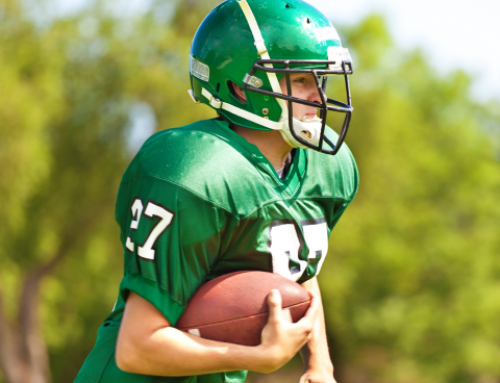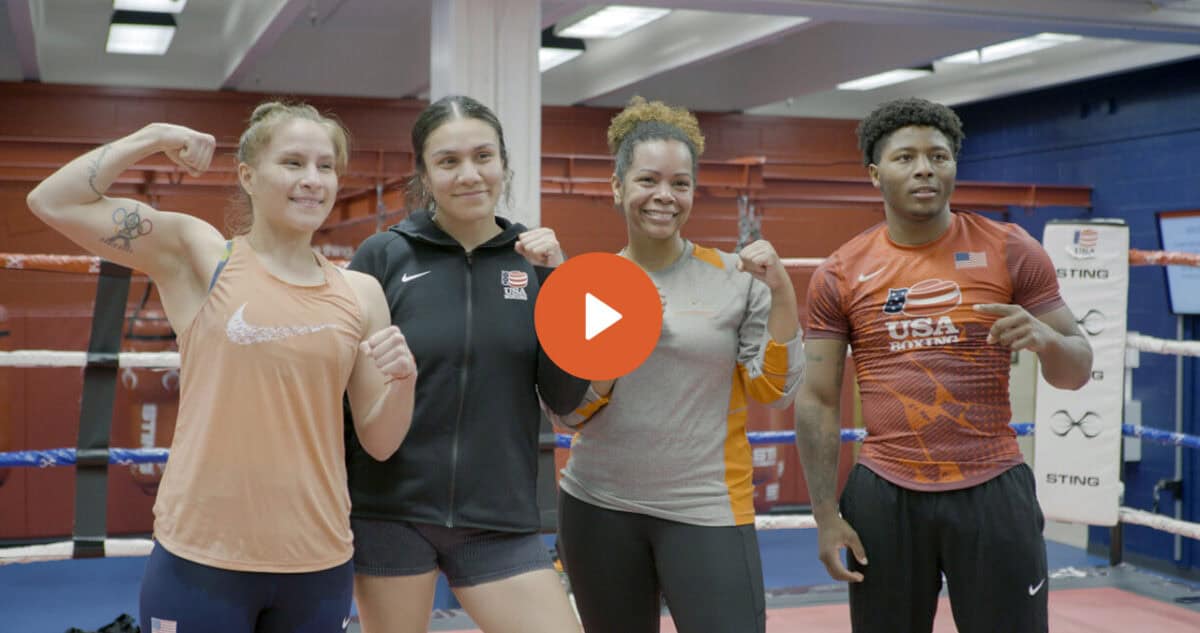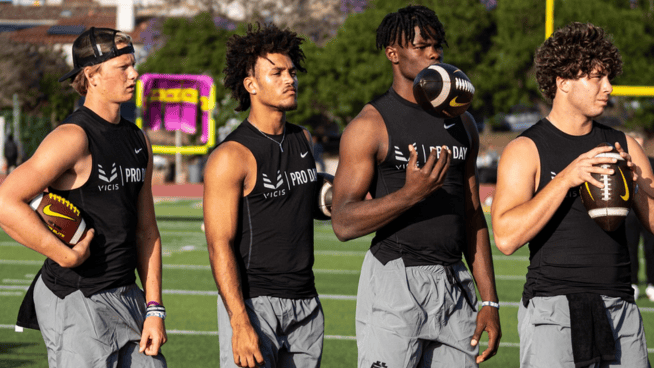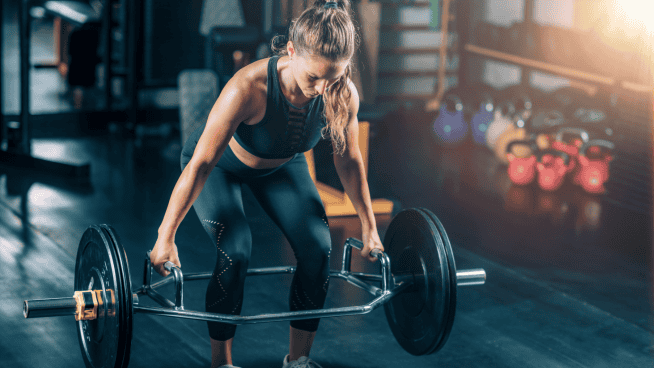Prevent Common Basketball Injuries With These Exercises
A well-rounded basketball training program incorporates preventative measures to ward off injuries that are prevalent in the sport. This is critical to your success on the court and to have a long and healthy career. (Create the perfect routine with The Keys to Basketball Training.)
Youth basketball players commonly sustain lower-leg injuries, hand injuries and concussions. Therefore, you should focus your injury prevention programs on these areas of the body. Fortunately, investing time in your health during your training can prevent these injuries, or at least reduce their severity. Incorporate the following exercises into your basketball-training program to help stave off injury.
Ankle and Knee Health
Knee Taps to Wall
This exercise prevents a loss of ankle dorsiflexion (toe to knee movement) from forcing you to wear restrictive bracing and mid- or high-top sneakers. A loss of dorsiflexion will typically trigger compensatory knee valgus and hip internal rotation as well as foot pronation.
Pair with: Squat, Deadlift or Lunge
- Assume a shoulder-width stance with your feet staggered heel to toe and your front foot an inch or two away from a wall
- Shift your front knee forward over your second and third toes to gently touch the wall; keep your feet firmly planted
- Shift back to the starting stance
Sets/Reps: 2×15-20 each leg
Glute Bridge With Band Abduction
This exercise establishes pelvic control and prevents internal hip rotation to prevent knee injuries. It also serves as a valuable adjunct to horizontal pressing performance, as it encourages a rigid pelvis and leg drive.
Pair with: Barbell or Dumbbell Bench
- Lie on your back and place an elastic band around both thighs, slightly above your knees
- Bend your knees and plant your heels directly under your knees, keeping them hip-width apart
- Engage your core and drive your heels into the ground to extend your hips toward the ceiling
- Simultaneously drive your knees outward
- Hold this position for one second
- Lower and repeat
Sets/Reps: 2×15-20
Wrist and Hand Health
Plate Pinches
This exercise strengthens the muscles of the hand and forearm to improve grip strength. Basketball players are often plagued by wrist, hand and finger injuries throughout the course of the season, so grip work is essential.
As it pertains to improving performance, a stronger grip usually equates to better ball handling and fewer turnovers. In the gym, a stronger grip recruits more muscle fibers during lifts, helping increase your overall strength and size.
Pair with: lower-body, core or mobility exercises (without holding a weight)
- Grab two or three five- to 10-pound plates with both of your hands
- Pinch the plates together with the tips of your fingers
- Keep your chest up and shoulders back
- Gently lower the plates to the floor after specified time
Sets/Duration: 2×15-30 seconds
Concussion Prevention
Given the speed at which basketball is played, contact to the head is possible at any time. It’s important to strengthen your neck muscles so they can absorb force and limit the amount transferred to your head. This may not prevent a concussion outright, but it may limit its severity.
In addition, training your neck will improve your posture. Taller athletes tend to look down frequently, creating tight and weak muscles. Neck exercises develop strength around the entire neck, eliminating imbalances that can create postural issues.
Seated Single-Arm Dumbbell Shrug
- Sit on a bench holding dumbbell at your right side with your palm facing in
- Keeping your arm straight, slightly turn your chin toward the right and shrug your shoulder to your ear
- Hold for one second
- Relax your shoulder and turn your head to the center
- Repeat and perform set on opposite shoulder
Sets/Reps: 2-3×10-15 each side
Four-Way Neck
Neck Extension
- Sit in a neck machine and place the crown of your head on the pad
- Look up and slowly extend your neck so the tip of your nose is pointed at the ceiling; pause briefly
- Slowly return to starting position
Manual Isometric Neck Flexion
- Sit in a neck machine and place your forehead on the pad
- Flex neck so your chin touches your sternum; pause briefly
- Slowly return to starting position
Lateral Isometric Neck Flexion
- Sit in a neck machine and place the side of your head on the pad
- Flex your neck to the side to bring your ear as close as possible to your shoulder; pause briefly
- Slowly return to starting position; perform set on opposite side
Sets/Reps: 2×8-12 each exercise
RECOMMENDED FOR YOU
MOST POPULAR
Prevent Common Basketball Injuries With These Exercises
A well-rounded basketball training program incorporates preventative measures to ward off injuries that are prevalent in the sport. This is critical to your success on the court and to have a long and healthy career. (Create the perfect routine with The Keys to Basketball Training.)
Youth basketball players commonly sustain lower-leg injuries, hand injuries and concussions. Therefore, you should focus your injury prevention programs on these areas of the body. Fortunately, investing time in your health during your training can prevent these injuries, or at least reduce their severity. Incorporate the following exercises into your basketball-training program to help stave off injury.
Ankle and Knee Health
Knee Taps to Wall
This exercise prevents a loss of ankle dorsiflexion (toe to knee movement) from forcing you to wear restrictive bracing and mid- or high-top sneakers. A loss of dorsiflexion will typically trigger compensatory knee valgus and hip internal rotation as well as foot pronation.
Pair with: Squat, Deadlift or Lunge
- Assume a shoulder-width stance with your feet staggered heel to toe and your front foot an inch or two away from a wall
- Shift your front knee forward over your second and third toes to gently touch the wall; keep your feet firmly planted
- Shift back to the starting stance
Sets/Reps: 2×15-20 each leg
Glute Bridge With Band Abduction
This exercise establishes pelvic control and prevents internal hip rotation to prevent knee injuries. It also serves as a valuable adjunct to horizontal pressing performance, as it encourages a rigid pelvis and leg drive.
Pair with: Barbell or Dumbbell Bench
- Lie on your back and place an elastic band around both thighs, slightly above your knees
- Bend your knees and plant your heels directly under your knees, keeping them hip-width apart
- Engage your core and drive your heels into the ground to extend your hips toward the ceiling
- Simultaneously drive your knees outward
- Hold this position for one second
- Lower and repeat
Sets/Reps: 2×15-20
Wrist and Hand Health
Plate Pinches
This exercise strengthens the muscles of the hand and forearm to improve grip strength. Basketball players are often plagued by wrist, hand and finger injuries throughout the course of the season, so grip work is essential.
As it pertains to improving performance, a stronger grip usually equates to better ball handling and fewer turnovers. In the gym, a stronger grip recruits more muscle fibers during lifts, helping increase your overall strength and size.
Pair with: lower-body, core or mobility exercises (without holding a weight)
- Grab two or three five- to 10-pound plates with both of your hands
- Pinch the plates together with the tips of your fingers
- Keep your chest up and shoulders back
- Gently lower the plates to the floor after specified time
Sets/Duration: 2×15-30 seconds
Concussion Prevention
Given the speed at which basketball is played, contact to the head is possible at any time. It’s important to strengthen your neck muscles so they can absorb force and limit the amount transferred to your head. This may not prevent a concussion outright, but it may limit its severity.
In addition, training your neck will improve your posture. Taller athletes tend to look down frequently, creating tight and weak muscles. Neck exercises develop strength around the entire neck, eliminating imbalances that can create postural issues.
Seated Single-Arm Dumbbell Shrug
- Sit on a bench holding dumbbell at your right side with your palm facing in
- Keeping your arm straight, slightly turn your chin toward the right and shrug your shoulder to your ear
- Hold for one second
- Relax your shoulder and turn your head to the center
- Repeat and perform set on opposite shoulder
Sets/Reps: 2-3×10-15 each side
Four-Way Neck
Neck Extension
- Sit in a neck machine and place the crown of your head on the pad
- Look up and slowly extend your neck so the tip of your nose is pointed at the ceiling; pause briefly
- Slowly return to starting position
Manual Isometric Neck Flexion
- Sit in a neck machine and place your forehead on the pad
- Flex neck so your chin touches your sternum; pause briefly
- Slowly return to starting position
Lateral Isometric Neck Flexion
- Sit in a neck machine and place the side of your head on the pad
- Flex your neck to the side to bring your ear as close as possible to your shoulder; pause briefly
- Slowly return to starting position; perform set on opposite side
Sets/Reps: 2×8-12 each exercise











